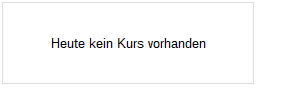
Spark Therapeutics Submits Marketing Authorization Application to European Medicines Agency for Investigational LUXTURNA(TM) (voretigene neparvovec)
Potential for first gene therapy for a genetic disease to be approved in both the U.S. and EU
PHILADELPHIA, July 31, 2017 (GLOBE NEWSWIRE) -- Spark Therapeutics (NASDAQ:ONCE), a fully integrated gene therapy company dedicated to challenging the inevitability of genetic disease, announced today that it has submitted a Marketing Authorization Application (MAA) to the European Medicines Agency (EMA) for LUXTURNA(TM), the proposed trade name for voretigene neparvovec, an investigational, one-time gene therapy for the treatment of patients with vision loss due to Leber congenital amaurosis or retinitis pigmentosa caused by confirmed biallelic RPE65 mutations. The MAA includes data from three clinical trials that enrolled 41 participants with RPE65-mediated inherited retinal dystrophy (IRD), including the first randomized, controlled Phase 3 trial for a gene therapy for a genetic disease.
Once EMA has validated the application, the review period will begin. Spark Therapeutics has previously received orphan product designations for LUXTURNA from EMA for the treatment of both Leber congenital amaurosis and retinitis pigmentosa.
"Today's announcement represents an important moment in the effort to treat blindness caused by inherited retinal degenerative diseases," said Christina Fasser, president of Retina International, an umbrella organization of more than 43 patient organizations world-wide promoting research in view to find a cure to inherited retinal degenerative diseases. "We are excited about the potential of this application to bring the first gene therapy to patients with this form of IRD."
The investigational therapy is under Priority Review with the U.S. Food and Drug Administration, with an assigned Prescription Drug User Fee Act (PDUFA) date of Jan. 12, 2018.
"With LUXTURNA now in regulatory review on both sides of the Atlantic, we are building out our medical and commercial infrastructure to prepare to bring investigational LUXTURNA to patients in the U.S. and Europe," said John Furey, chief operating officer of Spark Therapeutics. "For the first time, these individuals, who eventually will progress to complete blindness, have hope for a potential treatment option that may restore their vision. We remain steadfast in our commitment to bring this important investigational therapy to patients in the EU with vision loss due to Leber congenital amaurosis or retinitis pigmentosa caused by confirmed biallelic RPE65 mutations."
Clinical Trial Overview of LUXTURNA(TM) (voretigene neparvovec)
The safety and efficacy of LUXTURNA were assessed in two open-label Phase 1 trials, which continue to follow participants who received LUXTURNA between 2007 and 2012, and one open-label, randomized, controlled Phase 3 trial. Following the one-year control period of the Phase 3 study, all control participants elected to cross over and received LUXTURNA; long-term safety and efficacy continue to be assessed in the Phase 3 participants who received LUXTURNA between 2013 and 2015. The clinical trial program included 41 participants with vision loss aged four to 44 at the time of first administration. Confirmed biallelic RPE65 mutations and the presence of sufficient viable retinal cells were established in all participants.
LUXTURNA Phase 3 clinical trial data, including data from the intent-to-treat population of all randomized participants through the one-year time point, were published in The Lancet. Results reported in The Lancet showed a statistically significant and clinically meaningful difference between intervention (n=21) and control participants (n=10) at one year, per the clinical trial's primary endpoint, mean bilateral multi-luminance mobility testing (MLMT) change score (difference of 1.6; 95% CI, 0.72, 2.41; p=0.0013). In addition, participants who received LUXTURNA showed a marked difference compared to control participants across the first two secondary endpoints: full-field light sensitivity threshold (FST) testing averaged over both eyes (p=0.0004) and the mobility test change score for the first injected eye (p=0.0005). A third secondary endpoint, the change in visual acuity (VA) averaged over both eyes, was not statistically significant between intervention and control participants (p=0.17).
On average, participants in the original Phase 3 intervention group maintained functional gains observed by the day-30 visit through at least two years, as measured by MLMT and FST. The more than 100-fold (or greater than two log units) average improvement in FST testing observed in the original intervention group at one year, similarly, was maintained through at least two years.
In continuation of the trial to include crossover of the control group to receive LUXTURNA, 93 percent (27 of 29) of all Phase 3 trial participants injected with LUXTURNA saw a gain of functional vision as assessed by bilateral MLMT over the follow-up period of at least one year from administration of LUXTURNA to each eye. Additionally, 72 percent (21 of 29) of all Phase 3 trial participants receiving LUXTURNA successfully completed MLMT at the lowest light level evaluated (1 lux) at one year.
Data from a cohort of the Phase 1 clinical trial, in which investigational LUXTURNA was administered to the contralateral, or second previously uninjected eye, showed mean improvements in functional vision and visual function. These improvements were maintained through at least three years, as measured by both MLMT and FST testing. This cohort of participants (n=8) received the same dose of LUXTURNA that was administered in the Phase 3 trial and would have met the Phase 3 eligibility criteria.
No serious adverse events (SAEs) associated with LUXTURNA or deleterious immune responses have been observed. Two ocular SAEs were reported in the clinical program. There was one SAE related to the surgical procedure in one eye of a Phase 3 participant, in which there was foveal thinning and a sustained reduction in VA. One additional ocular SAE was reported in one eye of a Phase 1 participant in which the treatment for bacterial endophthalmitis led to elevated intraocular pressure and subsequent optic atrophy. There were three non-serious AEs of retinal deposits (subretinal precipitate) in three participants (three eyes) that were considered to be related to LUXTURNA. All three of these events were mild in intensity, transient in nature and resolved without consequences. The most common adverse reactions related to LUXTURNA reported in 10 percent or greater of the combined Phase 1 and Phase 3 trial participants included conjunctival hyperemia, cataract, intraocular pressure increased, and retinal tear.
About RPE65-mediated Inherited Retinal Disease (IRD)
Inherited retinal diseases (also known as inherited retinal dystrophies) are a group of rare blinding conditions caused by one of more than 220 different genes. People living with IRD due to biallelic RPE65 gene mutations often experience night blindness (nyctalopia) due to decreased light sensitivity in childhood or early adulthood and involuntary back-and-forth eye movements (nystagmus). As the disease progresses, individuals may experience loss in their peripheral vision, developing tunnel vision, and eventually, they may lose their central vision as well, resulting in total blindness. Independent navigation becomes severely limited, and vision-dependent activities of daily living are impaired. There are currently no approved pharmacologic treatment options for IRD due to biallelic RPE65 gene mutations.
About Gene Therapy
Gene therapy is an investigational approach to treat or prevent genetic disease by seeking to augment, replace or suppress one or more mutated genes with functional copies. It addresses the root cause of an inherited disease by enabling the body to produce a protein or proteins necessary to restore health or to stop making a harmful protein or proteins, with the potential of bringing back function in the diseased cells and slowing disease progression. To deliver the functional gene into the cell, a vector is used to transport the desired gene and is delivered either intravenously (IV) or injected into specific tissue. The goal is to enable, through the one-time administration of gene therapy, a lasting therapeutic effect.
About Spark Therapeutics
Spark Therapeutics, a fully integrated company, strives to challenge the inevitability of genetic disease by discovering, developing, and delivering gene therapies that address inherited retinal diseases (IRDs), neurodegenerative diseases, as well as diseases that can be addressed by targeting the liver. Our validated platform has successfully delivered proof-of-concept data with investigational gene therapies in the retina and liver. Our most advanced investigational candidate, with proposed trade name LUXTURNA(TM) (voretigene neparvovec), is currently under Priority Review with FDA for the treatment of biallelic RPE65-mediated IRD and has been designated as a drug for a rare pediatric disease. It previously received breakthrough therapy and orphan product designations from FDA and orphan product designations from the European Medicines Agency (EMA). The pipeline also includes SPK-7001 in a Phase 1/2 trial for choroideremia, and two hemophilia development programs: SPK-9001 (which also has received both breakthrough therapy and orphan product designations by FDA, and access to the PRIority MEdicines (PRIME) Program by the EMA) in a Phase 1/2 trial for hemophilia B being developed in collaboration with Pfizer; and SPK-8011, in a Phase 1/2 trial for hemophilia A to which Spark Therapeutics retains global commercialization rights. For more information, visit www.sparktx.com.
Cautionary note on forward-looking statements
This release contains "forward-looking statements" within the meaning of the Private Securities Litigation Reform Act of 1995, including statements regarding the company's product candidate LUXTURNA(TM) (voretigene neparvovec). Any forward-looking statements are based on management's current expectations of future events and are subject to a number of risks and uncertainties that could cause actual results to differ materially and adversely from those set forth in, or implied by, such forward-looking statements. These risks and uncertainties include, but are not limited to, the risk that: (i) our BLA submitted for LUXTURNA to the FDA may not be approved; (ii) our MAA submitted for LUXTURNA to the EMA may not be validated or approved; (iii) the data from our Phase 3 clinical trial of LUXTURNA may not support US labeling for all biallelic RPE65 mutations other than Leber congenital amaurosis (LCA) or retinitis pigmentosa (RP); and (iv) the improvements in functional vision demonstrated by LUXTURNA in our clinical trials may not be sustained over extended periods of time. For a discussion of other risks and uncertainties, and other important factors, any of which could cause our actual results to differ from those contained in the forward-looking statements, see the "Risk Factors" section, as well as discussions of potential risks, uncertainties and other important factors, in our Annual Report on Form 10-K, our Quarterly Reports on Form 10-Q and other filings we make with the Securities and Exchange Commission. All information in this press release is as of the date of the release, and Spark undertakes no duty to update this information unless required by law.
Investor Relations Contact:
Ryan Asay
Ryan.asay@sparktx.com
(215) 239-6424
Media Contact:
Monique da Silva
Monique.dasilva@sparktx.com
(215) 282-7470
The issuer of this announcement warrants that they are solely responsible for the content, accuracy and originality of the information contained therein.
Source: Spark Therapeutics, Inc. via Globenewswire
Mehr Nachrichten zur Spark Therapeutics Aktie kostenlos abonnieren
(Mit der Bestellung akzeptierst du die Datenschutzhinweise)

Hinweis: ARIVA.DE veröffentlicht in dieser Rubrik Analysen, Kolumnen und Nachrichten aus verschiedenen Quellen. Die ARIVA.DE AG ist nicht verantwortlich für Inhalte, die erkennbar von Dritten in den „News“-Bereich dieser Webseite eingestellt worden sind, und macht sich diese nicht zu Eigen. Diese Inhalte sind insbesondere durch eine entsprechende „von“-Kennzeichnung unterhalb der Artikelüberschrift und/oder durch den Link „Um den vollständigen Artikel zu lesen, klicken Sie bitte hier.“ erkennbar; verantwortlich für diese Inhalte ist allein der genannte Dritte.




